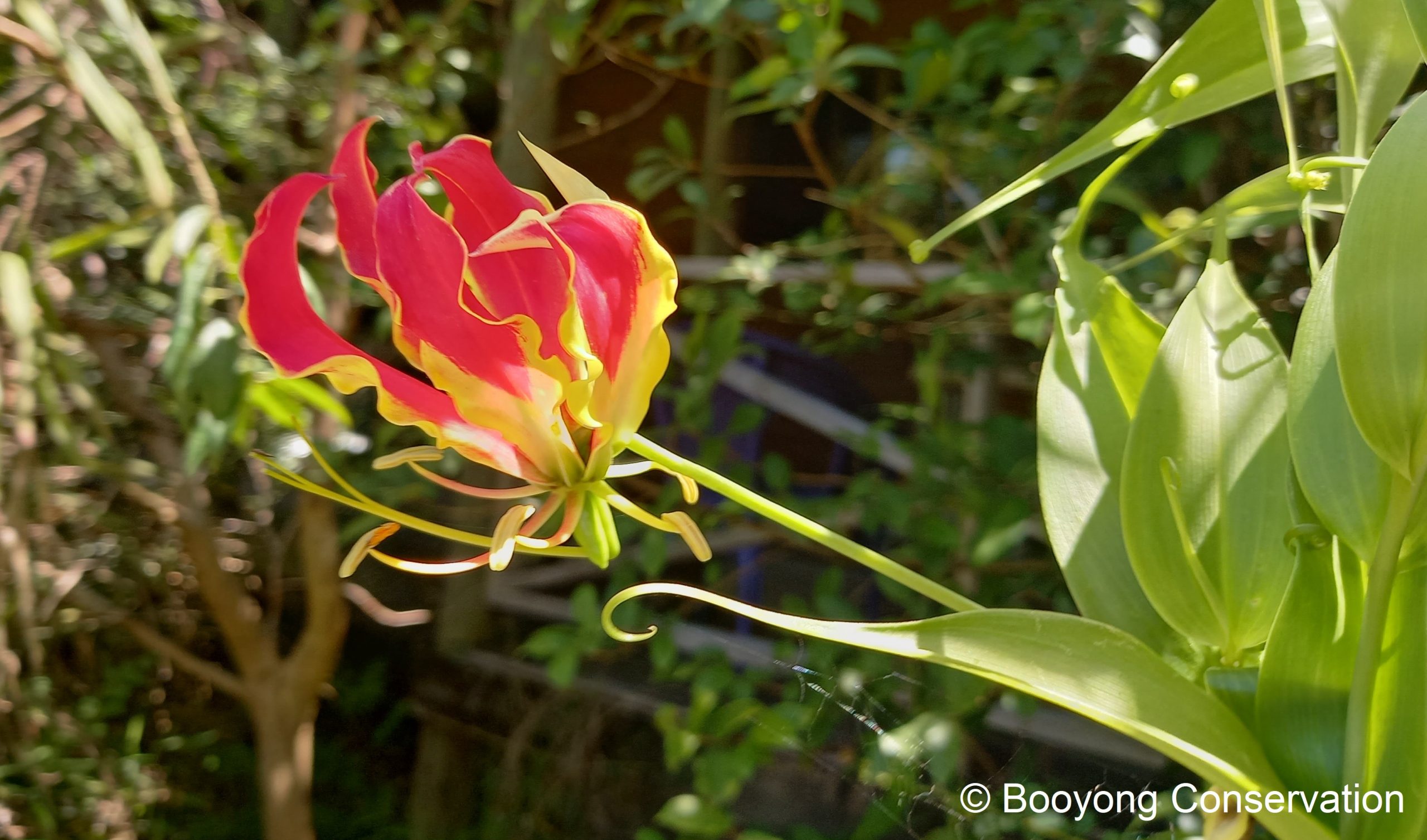It astounds me that something so beautiful be a toxic weed! – This Glory lily (Gloriosa superba) is poisonous and can cause death. It will be immediately removed from the cabin garden.
This plant was easily identifiable by it’s distinctive red, orange and yellow flowers which are stunning and commonly occur in October – May.
Glory lily is a perennial herb with climbing stems up to 4 m long. It can form dense under story (a density of 70 stems per square metre) and compete aggressively with native flora. It develops a network of rhizomes and tuberous roots underground and will generally die back each Winter and return each Spring.
Propagation – Glory lily produces large numbers of rhizomes and seeds which are often dispersed by animals (e.g. birds) that eat its fruit, by water or are spread by contaminated soil.
It is unfortunately widely cultivated as a garden plant in Australia – please do not propagate or sell it. This plant is highly toxic.
Do not eat this plant – all parts of the glory lilly are poisonous (especially roots and rhimzomes) and can affect both people and livestock. In humans, symptoms include tingling and numbness of the lips, tongue and throat, nausea, vomiting, giddiness, respiratory distress and irregular heartbeat. The tubers are also a contact irritant causing numbness and tingling of the skin.
If poisoning occurs:
If the patient is unconscious, unresponsive or having difficulty breathing dial 000 or get to the emergency section of a hospital immediately.
If the patient is conscious and responsive call the Poisons Information Centre on 13 11 26 or your doctor.
If going to a hospital take a piece of the plant for identification
